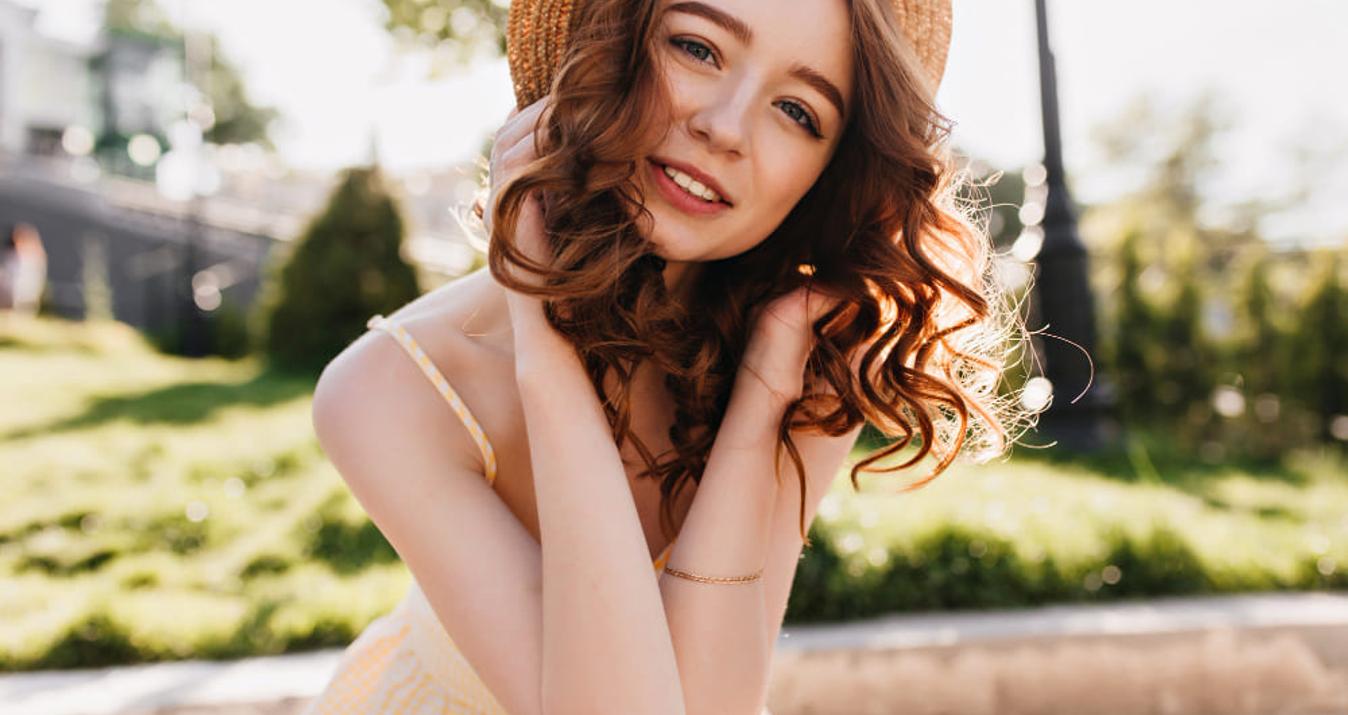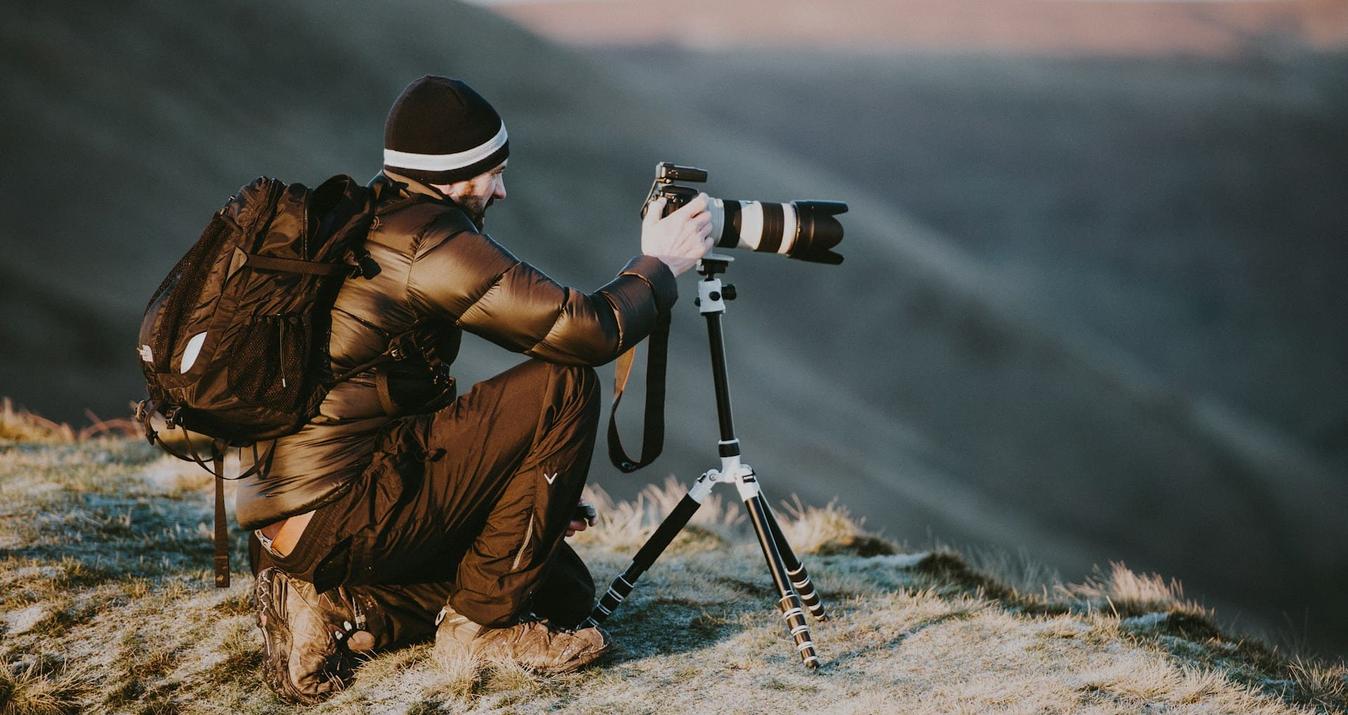Best Camera Backpacks: Protect and Carry Your Gear with Style
Last Updated on October 20, 2025
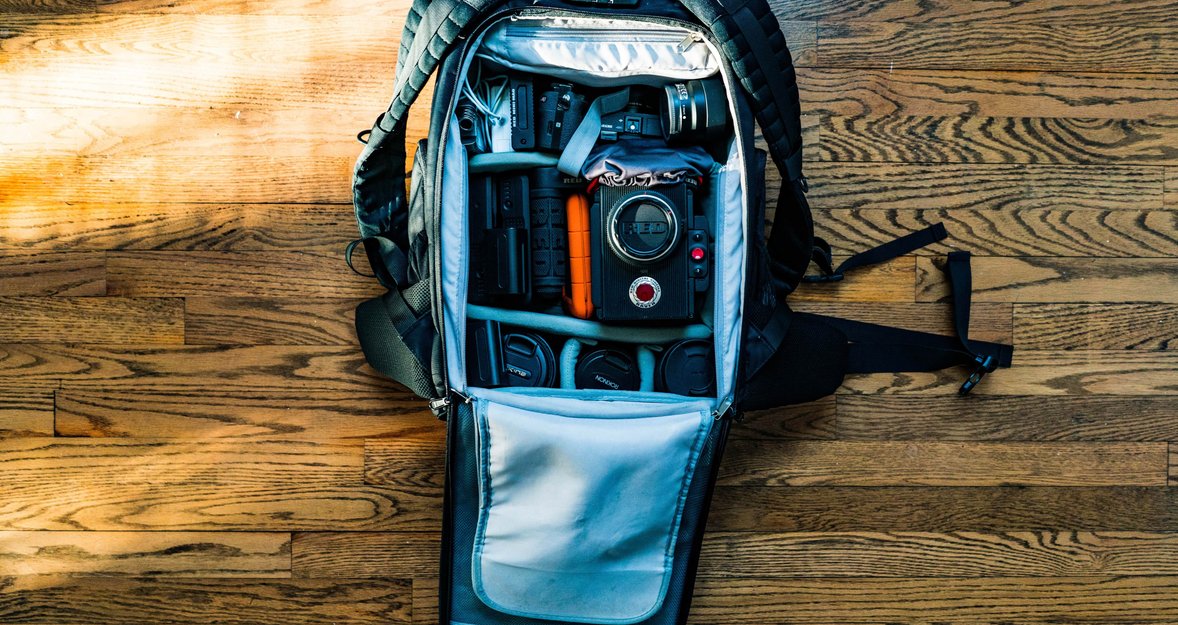
Discover the best camera backpacks to protect your gear and travel in style. Explore durable, weather-resistant bags for every adventure.
Keep your feet warm, your head cold, and your camera in a backpack. A lens costs much more than a travel camera backpack, so don't neglect the safety of your most useful tool.
Today, we are going to discuss the best camera backpacks that will enable you to take photos anywhere and at all times, regardless of the weather. In the mountains, woods, city, or on a ship, your camera, as well as other equipment, should be as safe as possible so that they do not become scratched or even lost.
Key Features to Look for in a Camera Backpack
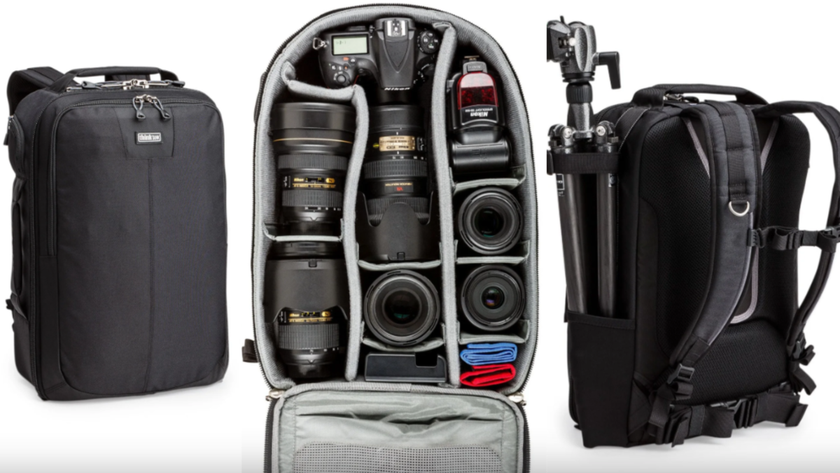 An effective bag must perform four key tasks: carry your kit, shield it, have a camera at your fingertips, and remain comfortable all day long. Pay attention to the equipment you carry the most, the shooting location, and the mode of transportation.
An effective bag must perform four key tasks: carry your kit, shield it, have a camera at your fingertips, and remain comfortable all day long. Pay attention to the equipment you carry the most, the shooting location, and the mode of transportation.
Your AI-Powered Photo Editor for MacOS and Windows
Discover Now!With this in mind, this is a basic checklist to help you choose the most suitable camera backpack for real-world use:
1. Capacity and Size: Fit All Your Gear
Don’t wear the loadout to the bag, vice versa. Check the litres and the form of the central hole. Will it fit either the gripped body, the best cheap digital camera with long zoom, or a drone kit without dividers being squashed? Leave 10-20% headroom for extras (batteries, filters, snacks). Short city shoots favor compact profiles; shooting days need room to grow. Many travel camera backpacks also feature expandable roll-tops for additional storage.
2. Durability and Protection: Weather-Resistant Materials
Tough fabric and smart padding are what keep glass safe. Look for high-denier nylon or recycled sailcloth with PU coating, sealed zips, a reinforced base, and foam that doesn’t collapse over time; brighter interiors help you spot small parts fast. Read camera bag reviews to see what trusted brands use for hardware and stitching, as broken buckles are usually the first to fail, not the fabric.
3. Accessibility: Quick Access to Your Camera
You shouldn’t fight your bag to make a picture. Side access lets you swing the pack forward and grab the body without setting it down, back-panel doors keep gear clean on wet ground, and a top hatch is perfect for your best camera for social media, a second lens, or a drone. For city breaks and airports, dual access is gold—that’s why many pick the best camera bags for travel with both a side zip and a full back opening.
4. Comfort: Shoulder Straps and Hip Belts
Comfort is load transfer, not just thick foam. Curved straps that sit flat, a real hip belt to take weight off your spine, and a ventilated back panel make a difference on long walks. If you have a longer or shorter torso, check the harness adjustment to ensure the pack fits properly—that’s what makes a bag your best photography backpack.
5. Organization: Camera Cubes and Dividers
The best camera brands recommend placing your camera in your backpack correctly, using the special dividers between the compartments. They organize the space and ensure that everything is always in its place. No need to spend 30 minutes looking for a lens or a cloth—you've already organized everything before shooting.
Make Every Travel Photo Look Cinematic
Try Luminar for TravelTop Picks for Best Camera Backpacks
Below are real-world choices that balance protection, speed, and comfort. We’ll keep specs practical—what fits, how it carries, and who it’s for—so you can decide which of the best camera backpacks matches your kit and trips.
1. Lowepro Pro Trekker RLX 450 AW II
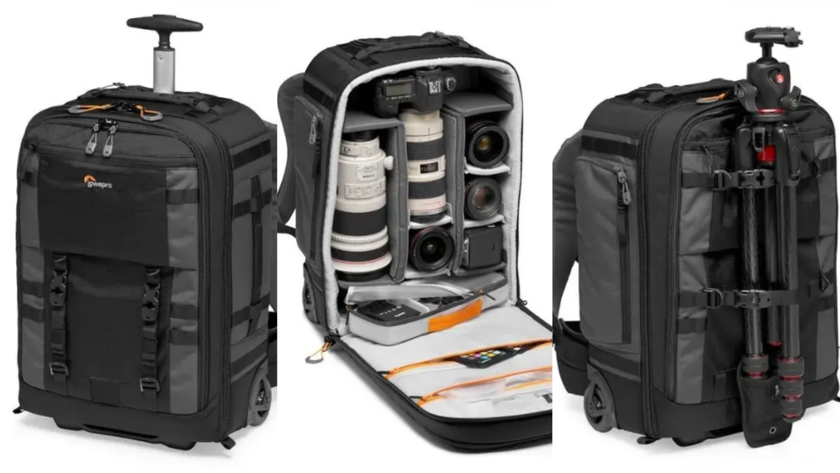 A travel-friendly hauler built for heavy kits. The Pro Trekker RLX 450 AW II combines a sturdy harness with a smooth roll-aboard chassis, so you can wear it on rough ground and wheel it through airports. Back-panel access keeps gear clean, the All Weather cover handles sudden showers, and the layout swallows a pro body with a 70-200 mm attached, plus extra lenses, a drone, and a laptop/tablet.
A travel-friendly hauler built for heavy kits. The Pro Trekker RLX 450 AW II combines a sturdy harness with a smooth roll-aboard chassis, so you can wear it on rough ground and wheel it through airports. Back-panel access keeps gear clean, the All Weather cover handles sudden showers, and the layout swallows a pro body with a 70-200 mm attached, plus extra lenses, a drone, and a laptop/tablet.
Key Features and Specifications
Hybrid carry: padded backpack harness + integrated roller frame.
Back-panel main access; quick-grab top pocket for small items.
Customizable divider system; bright interior for visibility.
Tripod/monopod lash points; side pockets for bottle or gimbal.
Padded laptop and tablet sleeves (carry-on friendly for many airlines).
All Weather (AW) rain cover; durable, abrasion-resistant exterior.
Fits a pro mirrorless/DSLR with telezoom attached, 4-6 extra lenses, and accessories.
Pros | Cons |
Hybrid roller/backpack eases long travel days | Heavier than non-roller hiking packs |
Back-panel access keeps straps and gear clean | Roller frame adds bulk in small cars/tight overheads |
Excellent protection and divider flexibility | Limited hip-belt ventilation for hot climates |
Tripod and tech sleeves are well executed | Carry-on compliance still varies by airline |
Durable build with AW cover for bad weather | Price sits at the premium end of the best camera bags |
2. Peak Design Everyday Backpack Zip 20L
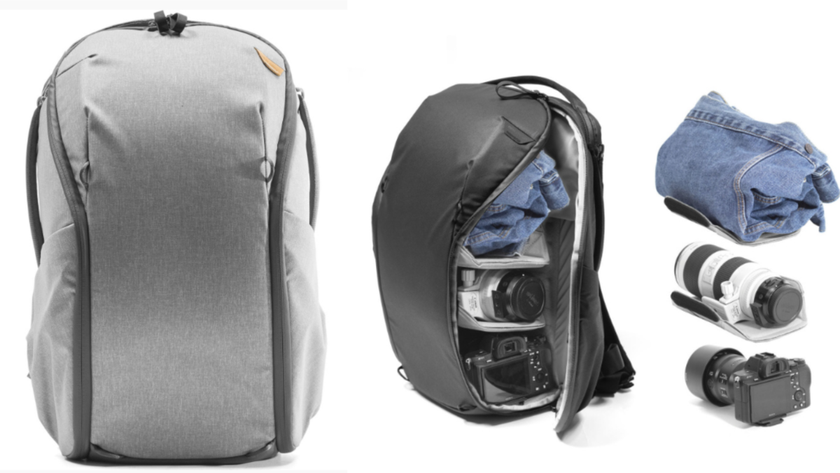 A clean, city-friendly pack for light kits. The Everyday Backpack Zip 20L maintains a slim profile, features a 270° weather-sealed zipper for easy opening, and utilizes FlexFold dividers to keep a body and two lenses snug without wasting space. It’s ideal as an everyday carry or the best small camera bag option that still handles a laptop and a tripod on the go.
A clean, city-friendly pack for light kits. The Everyday Backpack Zip 20L maintains a slim profile, features a 270° weather-sealed zipper for easy opening, and utilizes FlexFold dividers to keep a body and two lenses snug without wasting space. It’s ideal as an everyday carry or the best small camera bag option that still handles a laptop and a tripod on the go.
Key Features and Specifications
270° single-path, weather-sealed zip for top/side access.
Two FlexFold dividers; quick interior reconfiguration.
Padded laptop/tablet sleeves; soft pockets for batteries/cards.
Durable, water-resistant shell with reinforced base.
External carry straps for tripod/jacket; expandable side pockets.
Luggage pass-through; low-profile shoulder straps with sternum strap.
Capture Clip-friendly strap zones; stable, stand-up structure.
Pros | Cons |
Slim, discreet design that suits daily carry | Not built for very heavy pro kits or long telephotos |
Fast access from either side/top via 270° zip | Single-zip path can be fiddly with overstuffed loads |
FlexFold dividers protect and prevent gear rattle | Minimal hip-belt support; weight sits on shoulders |
Laptop and tripod carry without bulk | Limited interior depth versus larger, the best camera backpacks |
Weather-resistant materials and tidy organization | Premium price for the capacity; full rain can test zips if not fully closed |
3. Nomatic McKinnon 35L Camera Pack
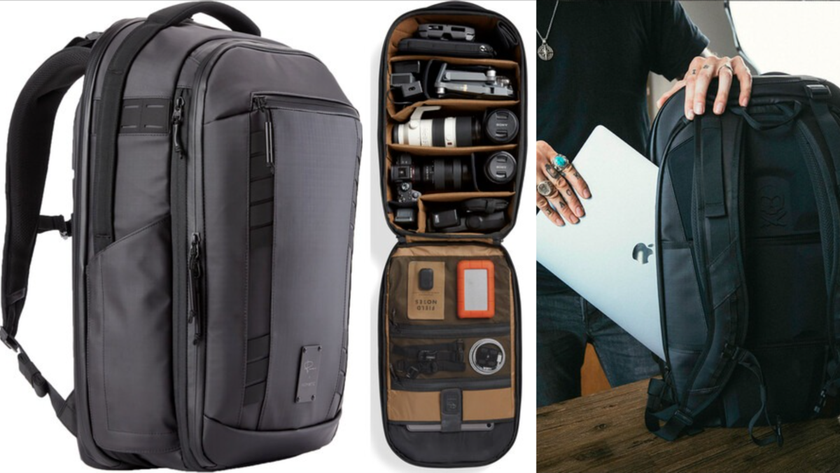 Built for travel days and full shoots, the McKinnon 35L balances a rigid shell with modular internals. It opens flat like a suitcase for fast layout, has a weather-resistant exterior, and expands for clothes or extra gear. With cubes and dividers, you can switch from a full camera load to a hybrid carry in minutes—a practical pick among the best camera backpacks for creators who move a lot.
Built for travel days and full shoots, the McKinnon 35L balances a rigid shell with modular internals. It opens flat like a suitcase for fast layout, has a weather-resistant exterior, and expands for clothes or extra gear. With cubes and dividers, you can switch from a full camera load to a hybrid carry in minutes—a practical pick among the best camera backpacks for creators who move a lot.
Key Features and Specifications
Clamshell (full back) opening for suitcase-style packing.
Modular camera cubes/dividers for fast reconfiguration.
Expansion zipper for extra volume on travel days.
Padded laptop/tablet sleeves; admin pockets for small items.
Water-resistant exterior, coated zippers, reinforced grab handles.
Tripod/strap carry points; luggage handle pass-through.
Contoured shoulder straps with sternum strap; removable waist support.
Pros | Cons |
Clamshell access makes packing and swaps quick | Heavier than minimalist daypacks when fully loaded |
Modular cubes shift from photo to travel use easily | Expansion can tempt overpacking and strain the harness |
Weather-resistant build with solid structure | Interior depth is tight for very long telephotos |
Good laptop protection and tidy admin layout | Waist support is basic compared with trekking packs |
Clean look that fits flights and client meetings | Premium pricing versus simpler, the best camera bags options |
4. Manfrotto Pro Light Backloader
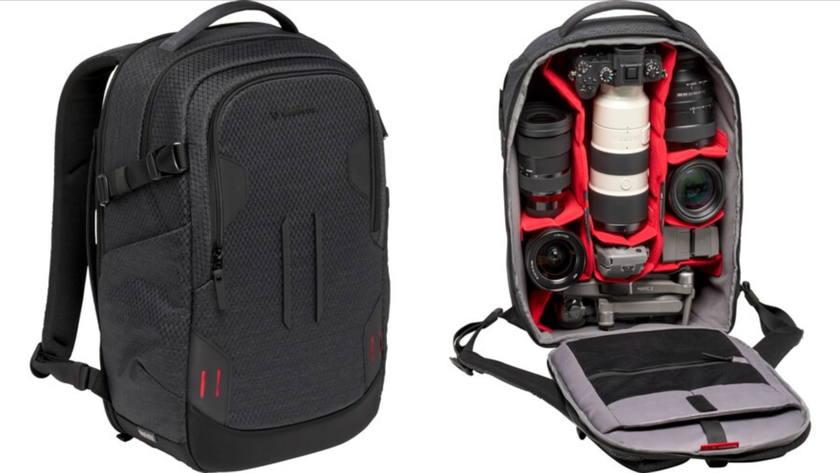 A tough, no-nonsense pack with rear access as the main act. The Pro Light Backloader opens from the back panel for full layout control and cleaner straps on muddy ground, with optional side access on some configs for a fast grab. It’s lightweight for its size, holds a pro body plus zooms, and rides well for city shoots or short hikes—a solid pick from one of the most trusted camera bag brands.
A tough, no-nonsense pack with rear access as the main act. The Pro Light Backloader opens from the back panel for full layout control and cleaner straps on muddy ground, with optional side access on some configs for a fast grab. It’s lightweight for its size, holds a pro body plus zooms, and rides well for city shoots or short hikes—a solid pick from one of the most trusted camera bag brands.
Key Features and Specifications
Full back-panel opening for wide, clean access.
Customizable divider set; bright interior for quick visual checks.
Side pocket/strap system for tripod or gimbap carry.
Padded laptop sleeve and front admin pockets.
Water-repellent fabric, coated zippers, and a rain cover.
Protective M-Guard foam around the camera cube.
Ergonomic shoulder straps, sternum strap, and breathable back panel.
Pros | Cons |
Rear access keeps the harness clean on wet or dusty ground | Full back opening can be slower than side zips for one-hand grabs |
Light for the protection level; easy to carry all day | The hip belt is modest for very heavy loads |
Divider flexibility suits mixed kits and compact drones | Limited expansion compared to travel-first designs |
Good laptop protection and tripod carry | Taller bodies with big grips may feel tight without reconfiguring |
Weather-ready materials plus rain cover included | Fewer exterior stash pockets than some rivals |
5. WANDRD PRVKE 21L V2
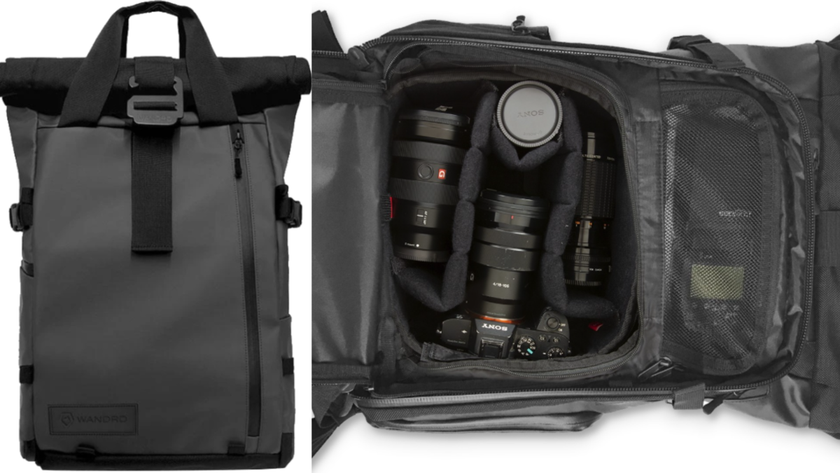 A sleek city-to-travel pack with smart access and weather protection. The PRVKE 21L V2 keeps a tight footprint for commuters, then expands via the roll-top when you need extra space. Pair it with the optional camera cube for padded storage, grab the camera through the quick side zip, and use the full back opening for a clean layout on the ground—a polished pick among the best camera bags for everyday shoots.
A sleek city-to-travel pack with smart access and weather protection. The PRVKE 21L V2 keeps a tight footprint for commuters, then expands via the roll-top when you need extra space. Pair it with the optional camera cube for padded storage, grab the camera through the quick side zip, and use the full back opening for a clean layout on the ground—a polished pick among the best camera bags for everyday shoots.
Key Features and Specifications
21L main volume with roll-top expansion for overflow.
Quick side access to camera cube; full back-panel opening.
Weather-resistant materials and coated zippers; rigid base.
Padded 16" laptop + tablet sleeves; front admin pocket.
Magnetic tote handles; luggage pass-through; hidden passport pocket.
Removable sternum strap; optional waist belt; external straps for tripod/jacket.
Works with WANDRD camera cubes and accessory modules.
Pros | Cons |
Compact, stylish design that fits daily carry and flights | 21L capacity is tight for large pro kits |
Side zip for fast grabs; full back access for clean packing | The hip belt is optional and light for long hikes |
Roll-top adds flexible space without bulk | Roll-top can slow quick top access when fully packed |
Rugged, weather-resistant build with a stable base | Darker interiors (on some colorways) make small parts harder to spot |
Thoughtful travel features: laptop/tablet sleeves, passport pocket, pass-through | Best with the brand’s cubes; third-party inserts may fit loosely |
Best Camera Backpacks for Different Needs
If you have a photographer friend, and you've been racking your brains for days or even weeks trying to figure out what to get them, here's a list of the best gifts for photographers, from which you're sure to find a sensible gift.
Best Travel Camera Backpack
Go slim and carry-on friendly. The Peak Design Travel Backpack 30L hits the sweet spot: clamshell opening, side zips for quick grabs, lockable hardware, a true 15" laptop sleeve, and a luggage pass-through. With small/medium cubes, it holds a body, mid-zoom, two primes, and a compact tripod without snagging in overhead bins—a practical pick among the best camera bags for travel.
Good camera fits:
Sony a7C II + 24-105 mm.
Canon EOS R6 Mark II + 35 mm.
Fujifilm X-S20 + 10-24 mm.
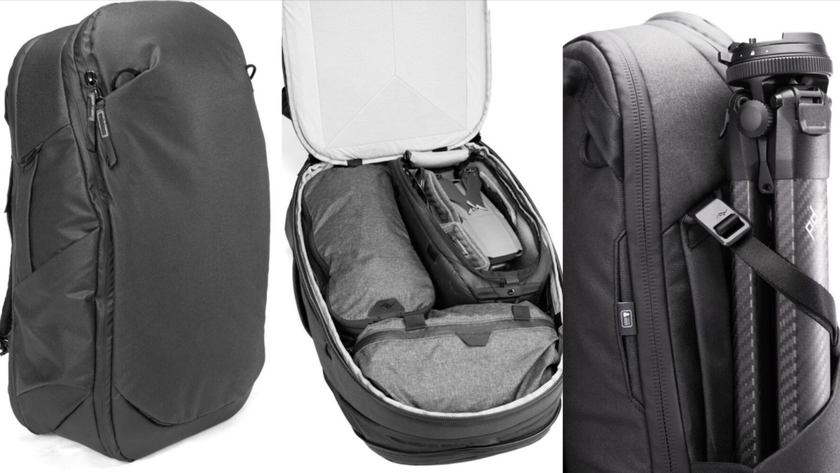
Best Camera Backpack for Hiking and Adventure
Trails require a reliable harness and weatherproofing. The Shimoda Explore V2 35 brings an adjustable torso, breathable back panel, side and back access, and a tough, water-resistant shell with a rain cover. Core Unit inserts lock lenses in place, while external straps secure a full-size tripod and layers without flop.
Good camera fits:
OM System OM-1 Mark II + 12-40 mm PRO.
Nikon Z6 III + 24-120 mm.
Sony a7 IV + 16-35 mm.
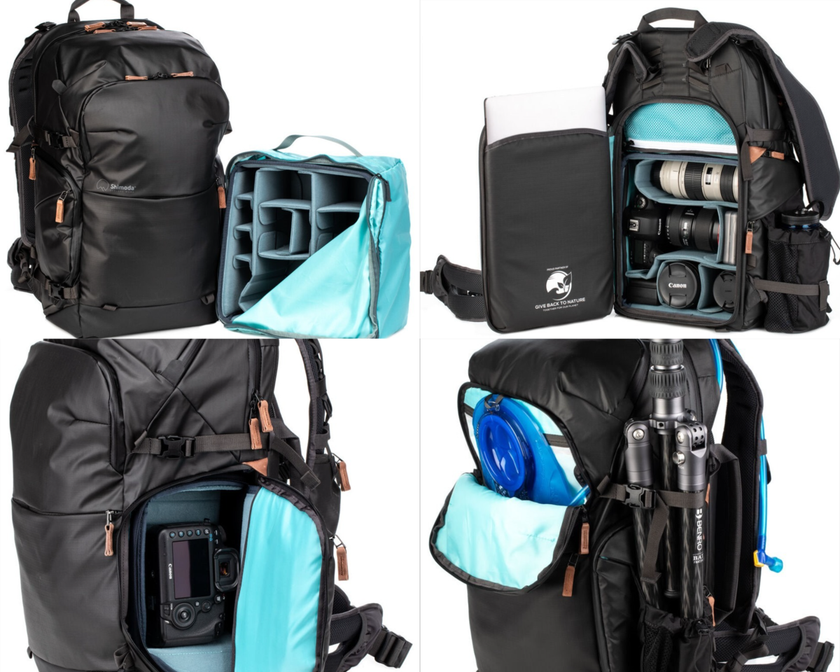
Best Camera Backpack for Everyday Use
Keep it compact and clean. The WANDRD PRVKE 21L V2 carries a body and two lenses, adds a padded laptop sleeve, and offers side zip access for fast shooting. The roll-top expands for a jacket, while the rigid base and coated zippers handle sudden showers. Swapping the camera cube out turns it into a tidy commuter—effectively your best small camera bag in backpack form.
Good camera fits:
Fujifilm X100VI (fixed 23 mm).
Sony a6700 + 18-135 mm.
Canon EOS R10 + 22 mm (EF-M equivalent via adapter or compact RF prime).
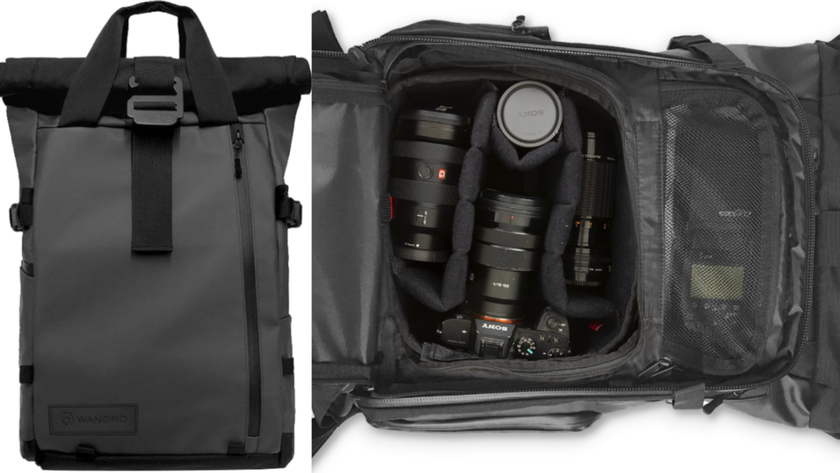
Best Camera Backpack for Professional Photographers
Heavy kits need structure and speed. The Think Tank BackLight Elite 45L centers weight on the hips, uses full back-panel access for clean ground work, and adds side zips for one-hand grabs. Weather-sealed fabric, rigid walls, and deep dividers protect long zooms; tech sleeves handle a 16" laptop and tablet. On set, bright interiors and stash pockets keep batteries, audio, and cards exactly where you expect.
Good camera fits:
Canon EOS R3 + 70-200 mm.
Nikon Z9 + 24-70 mm.
Sony A9 III + 135 mm GM.
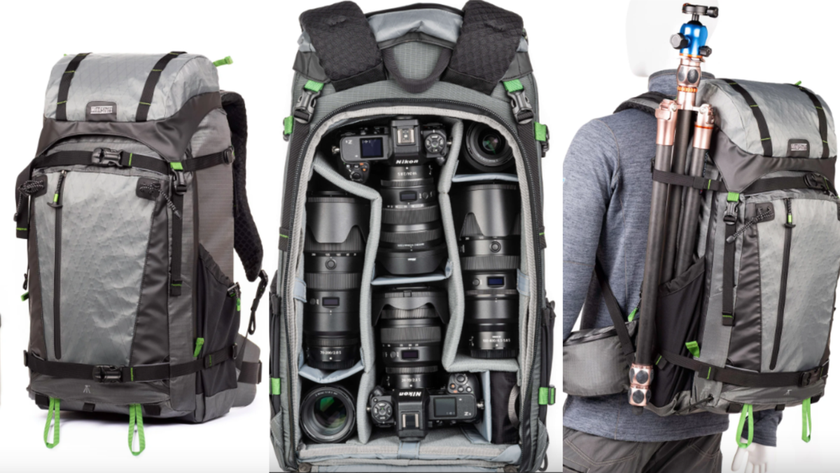
Pros need a pack that works like a tool: load transfers to the hips, back-panel access for clean ground work, and a quick side zip for one-hand grabs. What do professionals use? Of course, their knowledge, cameras, and sometimes an auto picture editor, if they need to speed up the workflow or a deadline is tight.
But the most important thing after the camera is the best camera backpack. Look for a stiff base, weather-sealed fabric, dividers that lock lenses in place, an adjustable harness with ventilation, and carry-on-friendly dimensions with a luggage pass-through. On set, bright interiors and quick-stash pockets save time; when a bag “disappears” on your shoulders and gear lands in the same spot every time, it’s the right choice.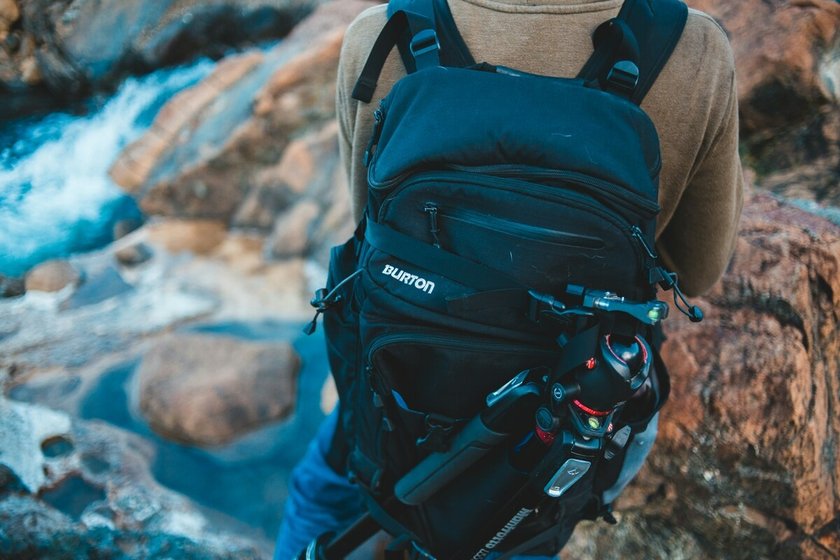
FAQ
How do I choose a camera backpack for hiking?
Aim for a real hip belt, ventilated back panel, and load-lifters. Keep capacity modest, balance the load, and choose durable fabrics; check trusted camera bag reviews for long-term comfort reports.
Are there any camera backpacks for small setups?
Yes—compact 15-22L packs or an insert inside a daypack keep a body and two lenses tidy. For truly minimal kits, a sling or the best small camera bag is lighter and faster.
How can I protect my gear from rain and bad weather?
Look for coated fabric, sealed zippers, and a seam-sealed rain cover. If storms are likely, add dry bags for lenses, and use hard shells or the best camera cases when you must check gear.
Which camera backpack is best for travel photography?
Pick a travel camera backpack with dual access (side + back), a slim profile for overhead bins, and a lockable main zip. Bonus points for a luggage pass-through and a rain cover.
What are the key features to look for in a camera backpack?
Fit for your kit, real padding, weather resistance, fast access (side/back/top), and a harness that moves weight to the hips. Check laptop sleeve size and tripod carry too—that’s what makes the best camera backpack in daily use.





